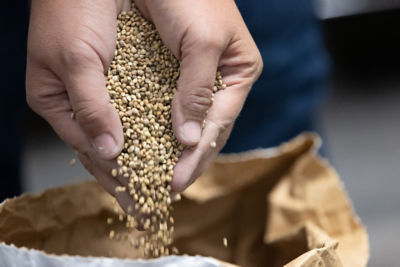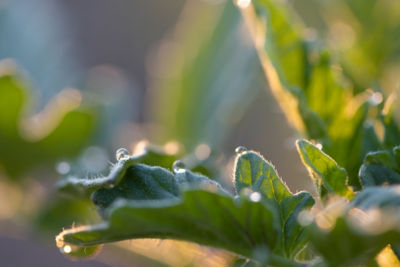Causal Agent
Environmental
Distribution
Worldwide
Symptoms
Edema – This disorder is characterized by green callus like growths on the upper and lower surfaces of the leaf. The growths may rupture as they enlarge.
 Edema: blistering on leaflet undersurface.
Edema: blistering on leaflet undersurface.
Puffiness – Affected fruit have an angular appearance and are less dense than normal fruit. When the fruit is cut open, incomplete locule development is apparent, with very few seeds and little gel present
 Puffiness: incomplete locule and gel development.
Puffiness: incomplete locule and gel development.
Sunscald – A white, shiny. leathery area forms on the side of the fruit that is suddenly exposed to direct sunlight. The affected area becomes sunken, and black mold frequently develops on the affected tissue. Sunscald usually develops when the fruit are mature green.
 Sunscald: processing tomato
Sunscald: processing tomato
Conditions for Development
Edema -This disorder develops when the leaf tissue becomes waterlogged, as a result of root pressure continuing to move water up the plant when transpiration is poor. This typically occurs when the soil is warm and wet and the air temperature is cool. Prolonged periods of high humidity favor this disorder.
Puffiness – Factors that lead to poor gel formation and seed set are high and low temperature extremes, the use of fruit hormones and conditions of drought or excessive water. Excessive soil fertility, especially nitrogen, may accentuate the development of this disorder.
Sunscald – Fruit that are suddenly exposed to direct sunlight, due to premature loss of foliage resulting from disease, pruning or breaking over of the plants as the fruit load increases, are the most susceptible to this disorder. Sunscald occurs when the internal fruit temperature increases dramatically, resulting in tissue damage.
Control
Edema – Proper ventilation for greenhouse crops and maintenance of soil moisture levels can help reduce the incidence of this disorder.
Puffiness – Controlling the temperature, soil fertility and humidity in the greenhouse can help reduce the incidence of this disorder.
Sunscald – The use of wilt-resistant and foliar disease resistant varieties as well as a good fungicide spray program can help reduce losses to sunscald. Also, losses can be reduced by pruning and harvesting plants carefully to minimize defoliation and fruit exposure to direct sunlight.




